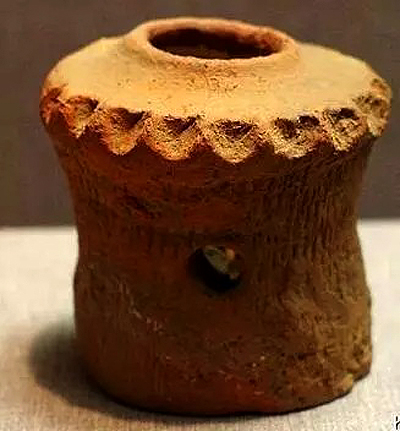
This earthen pot was excavated in 1956 in Dongzhuang Village in Shaanxi Province and found to be a product of Neolithic Period.
It measures 11.8cm in height, with a pair of round holes in the body on opposite sides and an extra small opening in the bottom.
For more than a decade since it was unearthed, no one knew what it was used for.
Then one day in 1969, an archaeologist from the excavation team went to his home village for holiday. It was a time when most Chinese in rural regions still relied on straw/firewood/rice hull-fueled brick stove and/or honeycomb coal stove for daily cooking.
When the archaeologist watched the extended family members preparing meal on a small coal stove, he was suddenly enlightened.

Once returned to the research institute, he found an earthen pot with holes and placed hot charcoals on the bottom covered with a layer of cold charcoals then closed the lid. After a certain period, he reopened the lid and fanned the charcoal in the stove. The flame was lit again.
He concluded the unearthed earthenware from the Neolithic Period could be no other but a pot for fire seeds. The two holes in the body can bring air into the container to prevent the fire from extinguish while the small opening in the bottom must be used to clean the ashes.
Since then, more fire-seed pots were excavated from Henan, Gansu and many other provinces in China. In one site, such fire-seed pot was discovered in almost each of remains of property, suggesting a facility like this was widely used in China as earlier as 6,000 years ago.